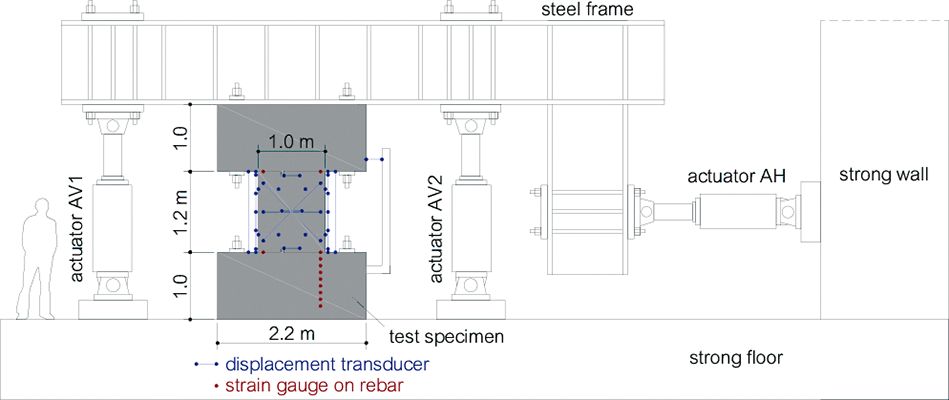Title of Project:
ARCO – Effect of Axial Restraint on the Seismic Behaviour of Shear-Dominated COupling Beams
Hosting Research Infrastructure:
STRULAB
No. of Users:
5
Team Leader:
University of Liege
Boyan Mihaylov
Team:
University of Lisbon
João Almeida
Miguel Pedrosa Ferreira
Aarhus University School of Engineering
Lars German Hagsten
Jakob Fisker
Summary of Project:
Reinforced concrete coupled walls are an efficient structural system for medium to tall buildings which provides large stiffness and strength against wind and seismic loads. The coupling of the individual wall units is typically provided by short and stiff coupling beams which deflect in double curvature with high shear stresses, and therefore are susceptible to brittle shear failures. At the same time, in regions of high seismicity, the coupling beams are required to possess large ductility and energy dissipation capacity. However, while a number of experimental programs have been performed to evaluate the ductility and complete cyclic response of coupling beams, the boundary conditions used in the tests deviate in an important detail regarding the boundary conditions encountered in real structures. In coupled wall systems the stiff walls and floor diaphragms restrain the elongation of the beams due to cracking and yielding, and this generates compression in the beams influencing their ductility. Because past experimental studies have almost exclusively neglected this effect, it is not captured by current models for coupling beams and it is not included in code provisions such as EC8 Part 3 for the performance-based seismic evaluation of existing buildings.
To address the identified gap of knowledge, this research project will focus on testing to failure of coupling beams with various levels of axial restraint. As coupled wall systems built before the 1970s are the most susceptible to brittle failures, the test specimens will feature conventional orthogonal reinforcement which does not meet the current design requirements. Three nominally identical coupling beams will be tested to failure under reversed cyclic loading and variable level of axial restraint to investigate the effect of the restraint on their seismic performance. Furthermore, while the first three specimens will be subjected to a conventional loading protocol with a gradually increasing displacement magnitude, a fourth beam will be tested under a large inelastic pulse in one direction followed by a push to failure in the opposite direction. Even though this loading scenario is realistic and can cause severe strength degradation, it has been neglected in experimental studies.
One of the most innovative aspects in the project will be the evaluation of the components of shear resistance based on detailed deformation measurements. This new experimental evidence will have a significant impact not only on the modelling of coupling beams, but a variety of critical regions and elements such as deep girders, short walls, short columns, beam-column joints. Finally, the original experimental study will be used to advance an innovative kinematics-based approach along with stress-field and plasticity models in order to capture the effect of axial restraint, and to integrate these models into the framework of EC8 Part 3 for the seismic evaluation of existing buildings.


